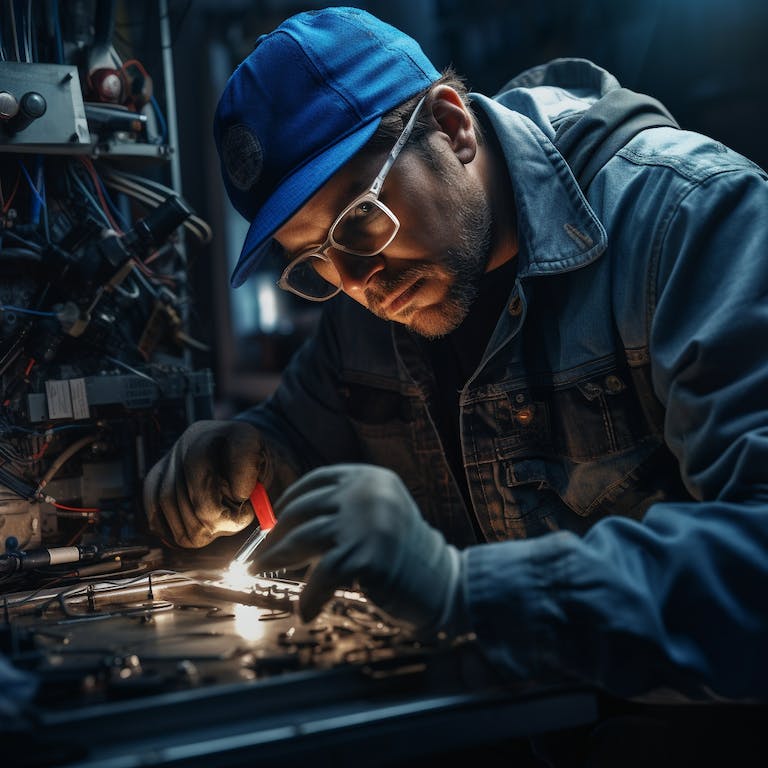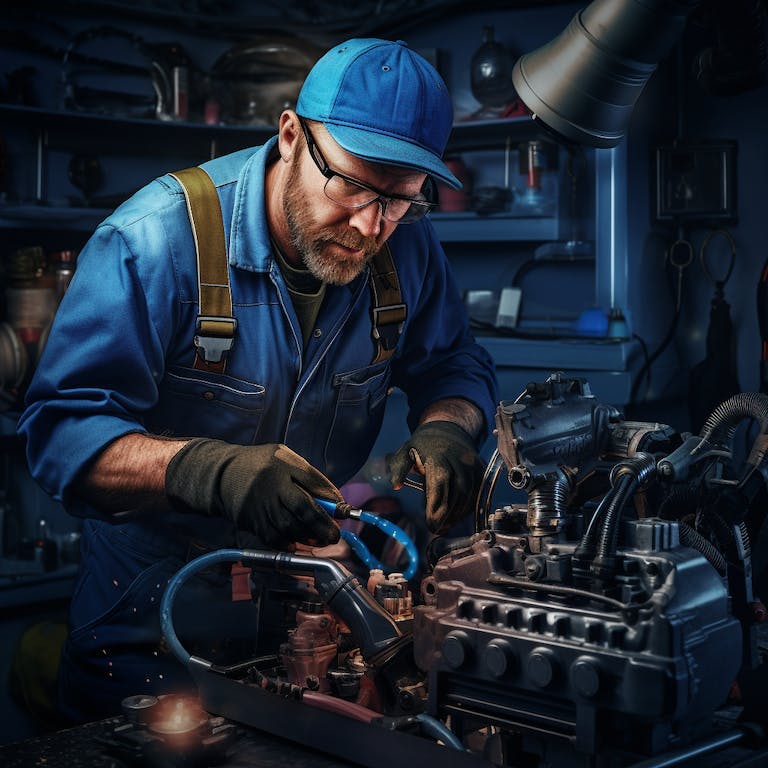Radiators that function at radio frequencies act as heat exchangers, allowing thermal energy to be transferred from one medium to another.
This thermal energy can be used for cooling or heating applications. The vast majority of these radiators are intended to function correctly in automobiles, homes, and electrical gadgets, and the majority of them do so successfully.
For the most part, epoxy glue can withstand high-temperature settings, and J-B Weld is no exception. J-B Weld can be used to attach several surfaces.
Steel, porcelain, and ceramics are examples of such materials. Marble and glass, as well as fiberglass and paper, are also examples. Because alcohol can weaken the link between surfaces, it must be avoided while cleaning surfaces.
The best course of action to take if the radiator is leaking and you will need to repair it with a J-B weld will be discussed in this article. Several frequently asked issues are addressed in this article as well. Pay close attention to the instructions in the article and follow them to the latter to properly fix your radiator.
Contents
- 1 Using a J-B Welder to Repair a Radiator Leak
- 1.1 Step 1: Remove the radiator cap and drain the water.
- 1.2 Step 2: Ensure that the area where the leak was discovered is spotless.
- 1.3 Step 3: Combine the J-B WELD and other ingredients thoroughly.
- 1.4 Step 4: using the wooden tool, apply a liberal amount of J-B WELD to the whole area where the leak first appeared.
- 1.5 Step 5: fill the radiator with fresh water.
- 2 Fixing a Cracked Plastic Radiator
- 3 Frequently Asked Questions
- 4 Conclusion
Using a J-B Welder to Repair a Radiator Leak
Step 1: Remove the radiator cap and drain the water.
- Before beginning this repair, make sure the radiator has been entirely drained. Before you drain the radiator, a few prerequisites must be met. You should first make sure you haven’t gone into your car in the recent few hours. This necessitates an incredibly cool engine, so make sure you have one.
- Ensure that the cell is not connected to the vehicle’s engine. Your batteries may become damaged as a result of the process. And as a result, you’ll be charged for services you didn’t receive.
- Third, shield the engine from the weather by wrapping it in a large blanket or fabric. Radiator fluid can squirt during the draining procedure because the radiator is open. There is a good chance that they will cause significant damage or possibly death if they get inside the engine in any way. Place a container under the radiator plug and remove the radiator cap to let air circulate through the system.
- Depending on the model, the reservoir plug can usually be found in one of the radiator’s four lower borders. When it stops dripping, remove the cover and let the liquid sit until it is completely drained.

Step 2: Ensure that the area where the leak was discovered is spotless.
Before you start cleaning, you should find out where the leak is coming from. You’ll have an easier time completing your assignment if you follow these guidelines.
As a result, you’ll know which rooms in the house are a no-go when it comes to cleaning. Chalk or a highlighter should be used to outline the area clearly. The leaky area must be cleaned up thoroughly. Remove all debris and dust from your radiator.
The use of solvents like glass cleaner or brake cleaner can help you get the job done quickly. Squeeze the towel or cloth to remove as much liquid as possible.
Wipe it clean with a moist cloth and brake cleaner or glass cleaner. When cleaning, be sure to remove any rust or hard dust with a scraper. With a towel, you can effectively remove grease and dirt. Do it all over again with a fresh piece of fabric.
Add some water to it, then use it to clear up any lingering messes from the previous cleaning session. By doing this, any traces of the solvents will be removed entirely.
Step 3: Combine the J-B WELD and other ingredients thoroughly.
The next step is to get everything ready for the J-B Weld. Let us first lay the groundwork before moving on to the next phase. J-B Weld is a multi-product company, making over 50 unique items. It’s not a matter of picking the best person for the job.
This conversation revolves around J-B. There are two forms of packaging for Weld products. For the most part, these products are sold in sets of two. You must combine the materials in these containers to get the correct result.
Only one container is available to the others. With that in hand, you’re ready to go anywhere. You have to mix things up a bit to get better outcomes. After that, put them into practice as soon as possible. When combining and swirling the mixtures, it’s best to use single-use mixing and stirring equipment.
Regardless of where you put the J-B Weld, it will eventually fail because the combination will dry up and become unusable as soon as it does. It’s inevitable that the plate, or anything else you plan to use, will become soiled.
J-B Weld’s cardboard packaging might be worth trying out. Nevertheless, if you do this, you risk corrupting the documentation. When combining the ingredients, use a wooden spoon or other woody devices. However, it would be best if you acted quickly, as J-B Weld will shortly become well-known.
Step 4: using the wooden tool, apply a liberal amount of J-B WELD to the whole area where the leak first appeared.
This step is done by marking the radiator and applying J-B Weld to that area. Place the J-B Weld in the desired spot by using a flat item of some sort. It should be half as long as the leak is to guarantee that it thoroughly covers the area on all sides.
Consider that a leak’s size is equivalent to that of a coin. For this project, a J-B weld one and a half measures more minor will be required. As a result, the hole is entirely and utterly enveloped. Because of the forging, the J-B weld fills in the entire hole. For a complete settlement of the mixture, let 5-6 hours. It will also take another 12-15 hours for the wound to heal fully.
Step 5: fill the radiator with fresh water.
After J-B Weld has entirely burnt off, it’s time to refill the radiator. Extra care should be taken, and waiting until after the radiators have been squeezed is preferable to the minimal time necessary is recommended.
A heat gun can also be an effective tool. It’s critical, however, not to overdo it. To begin, remove the radiator and replace the connector that’s underneath it. The radiator cap can then be replaced if necessary. Fill the radiator fluid reservoir with antifreeze after that.
The first step is to remove the old engine cover. Afterward, connect the cells and turn the car’s engine on. Repeat the procedure if you find any other leaks.

Fixing a Cracked Plastic Radiator
When you take the automobile in for radiator services, you will most likely find that a metal radiator will be repaired and not a plastic radiator. They will attempt to persuade you to install a new radiator. This can become more costly than merely correcting the problem.
It is relatively simple to remedy simple radiator problems. When it relates to plastic radiators, there are a couple of things to keep in mind. High temperatures ranging from 94°C and higher will be required for any repairs.
The plastic radiator replacement epoxy must be able to withstand extremely high temperatures and high pressures. Consequently, you will be aware that the repair is not completed appropriately. Unlike metal radiator tanks, plastic radiator tanks are made of crystal nylon with a high softening property. This allows the entire radiator construction to withstand the tremendous amount of stress that it is subjected to.
When repairing the radiator within the automobile, drain any excess water to the line beneath the leak or break. Using this method, you may prevent any water leakage while you are working. Super Prep Plastic Cleaner should be used to clean the area that has to be repaired thoroughly.
To repair plastic more quickly, use a heat gun; the heat will loosen the plastic.
Heat the region gradually, and you should observe that the crack grooves and surrounding surfaces become glossy due to the heat. With longer cracks, gradually heat 2-inches of the restoration area, making sure to finish the welding before moving on to the next piece of the repair area.
Utilize the tip to create a V-shaped channel that runs the length of a break before welding it together.
Get a Nylon rod, then melt it into the groove with the included airless polymer welder. The rod will melt and adhere to the damaged portion of the body. You will notice that the tint of the rod is somewhat brown when it is finished.
Due to the toxic nature of the vapors, perform the work in a well-ventilated environment.
The next step is removing the remaining nylon rod from the welder after it has been melted further into the repair area. Finally, using the welder tip, mix the melted nylon into the old radiator plastic.
Continue to blend until you have an even color.
Make an effort to obtain an even combination of the new and old plastic, resulting in a more durable repair.
Allow everything to cool down and harden once more before continuing.
If you leak the plastic radiator, you can use plastic radiator repairs epoxy to patch it up. Buy a radiator plastic repair kit that will include your two-part epoxy putty and other necessary supplies.
Frequently Asked Questions
What is the possible cause for a leaking radiator?
Answer: One could count the number of possible reasons for a car radiator leak on the one hand. Corrosion inside the radiator is the leading and also the most common source of this problem. Radars, hoses, and hose connectors accumulate silt and rust with time, which can cause holes to appear in the radiator. Overheating can be caused by a lack of coolant in a few scenarios.
How is a radiator sealed with J-B weld?
Answer: After the vehicle has been started, check for any remaining leaks and repeat the process as necessary. Remove the converter cap and connect the radiator overflowing line to the inlet manifold to produce an even better deal. Start the engine a few times to get it warmed up. The suction will draw part of the J-B WELD into the chamber, resulting in a better seal.
Conclusion
In conclusion, if there are no leaks after roughly ten minutes, the task has been finished appropriately. Everything is now complete and ready for you to employ.
Due to the toxicity of epoxy, it is recommended that you use protective gloves while handling the chemical. Otherwise, make sure you thoroughly wash your hands to remove any adhesive that may have spilled on them. Check for any spilled compounds, such as antifreeze, and keep them clean.
It should not be necessary to weld the radiator or radiator brace into place. Hopefully, everything is in working order.
There may be some support brackets that need to be unbolted for the radiator to be removed if the radiator is being rebuilt, and nothing will have to be welded in this case. Where the need is, contact a professional.


![Office Chairs Made From Car Seats [Unique Ideas] office-chairs-made-from-car-seats-3](https://globoautomotives.com/wp-content/uploads/2022/09/Office-Chairs-Made-From-Car-Seats-3-6711743-300x300.jpg)




